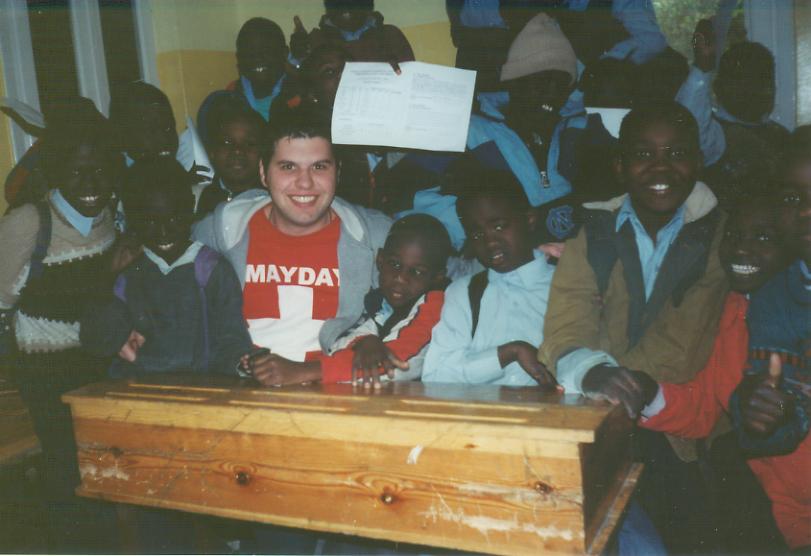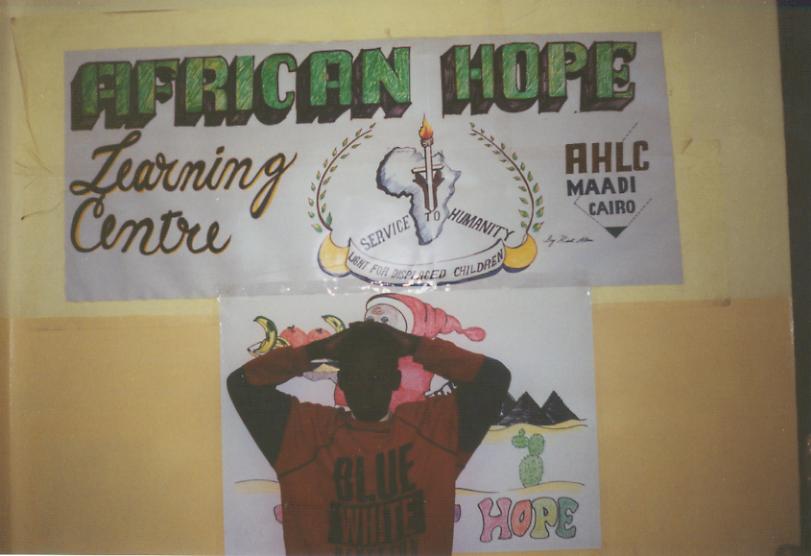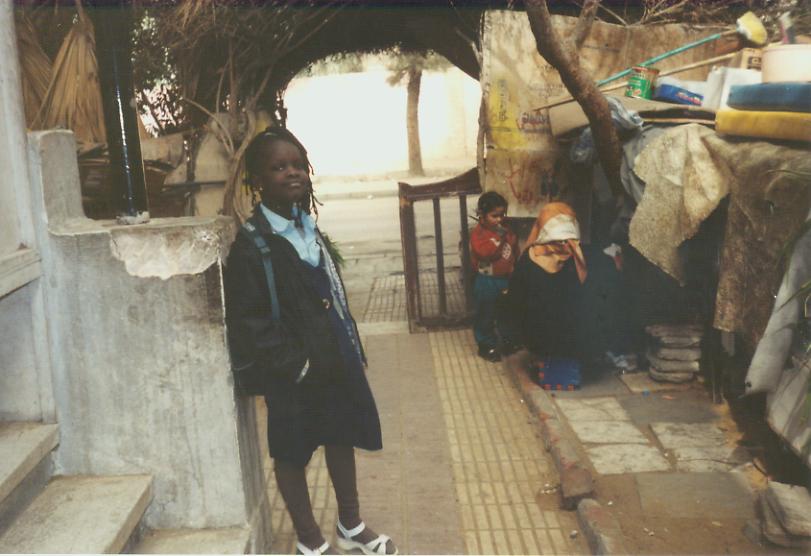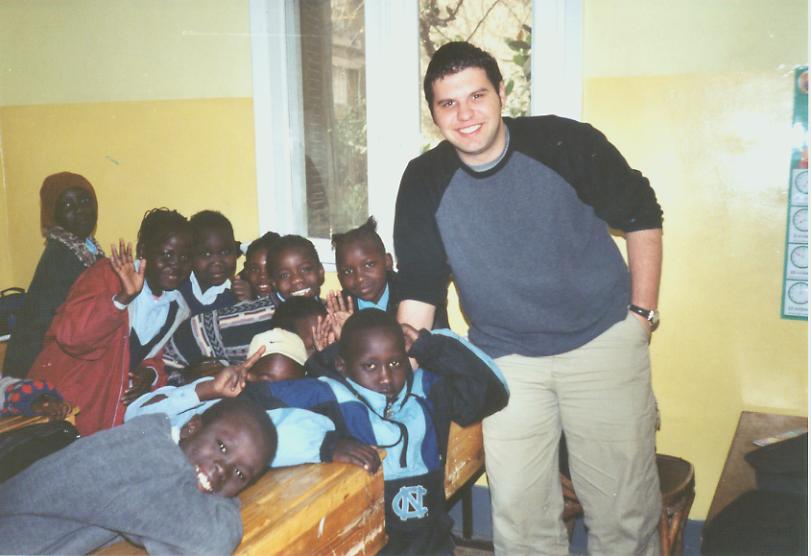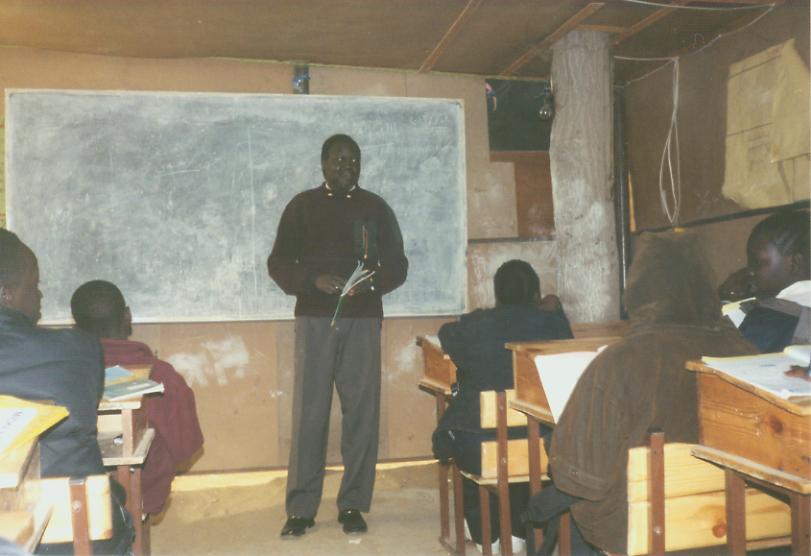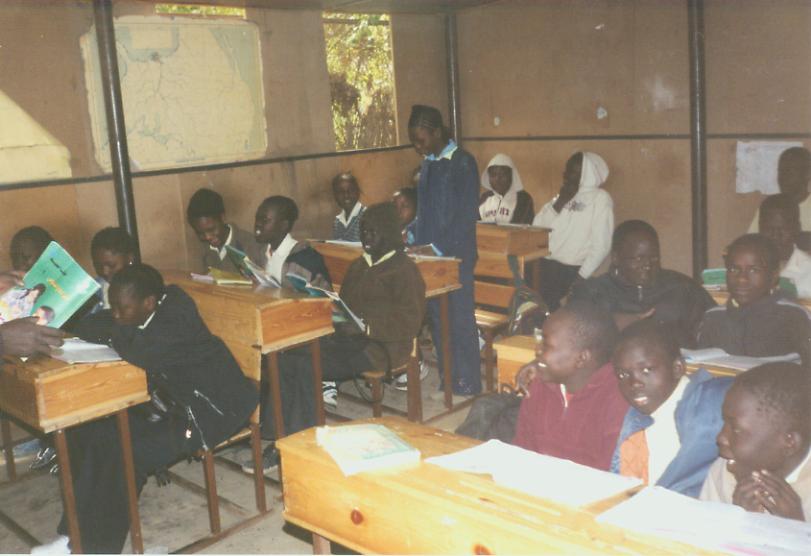
|
|
With the help of the Rotary Ambassadorial
Challenge the THANK YOU AMBASSADORS FOR YOUR HARD WORK
AND THANK YOU TO ALL THE DONORS! Dan
|
|||||||||||
|
|
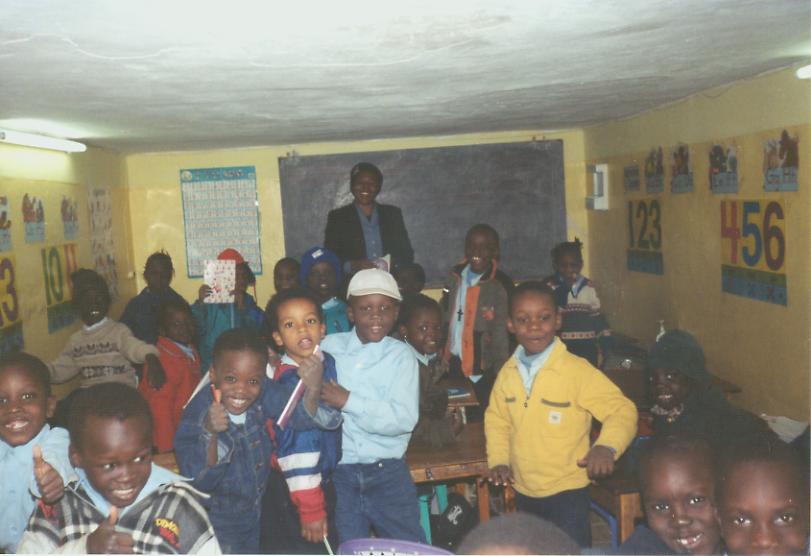
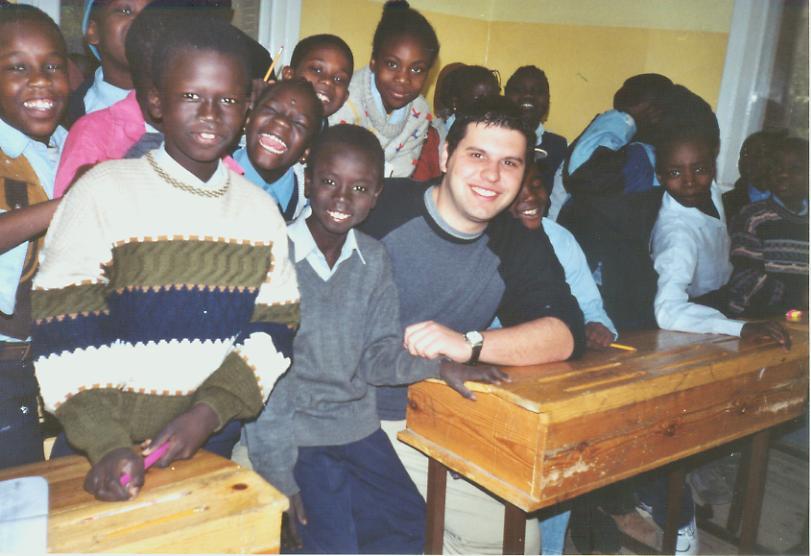
The Refugee Children of Sudan When westerners think of
Since the early 80s, Sudan has experienced conflicts between the Arab Muslim northerners, the base of the government,
and the black Africans of the south, who practice mainly Christian or animist beliefs. Since 1983 at least one out of every five southern Sudanese has died because of
the 17-year civil war. Nearly two million people have died and about 80% of southern
Sudan's estimated five million people have been displaced. Besides
the atrocities of war, famine is devastating the country. Malnutrition is the main cause of death for hundreds of thousands
of people. Due to the everyday nightmare that the Sudanese experience, many chose to cross the northern border to Egypt, and
then hoping to immigrate to a safe heaven in the west. The reality of undocumented immigrants and refugees in Egypt is very different from what the official statistics say.
Many non-governmental associations and churches talk about hundreds of thousands, even millions of Sudanese refugees in Egypt.
The situation is complex because many Sudanese do not receive refugee status from the United Nations High Commission for Refugees
(UNHCR). In fact many do not even apply or are afraid to do so. Among the refugee community, there are many stories of people
being deported back to Sudan; once they arrived they were executed because they were considered rebels by the Sudanese government. Once in Egypt many Sudanese realize that this is not paradise. Once here many become homeless, unemployed and face
much discrimination. This is particularly hard for the thousands of children that face the real world and the harsh life of
being refugees. The Sudanese refugee children are not allowed to attend public schools in Egypt because they are not citizens.
In order to help with their education, churches like the Presbyterian Church USA and non-governmental organizations, like
Rotary International, have established special schools for the Sudanese refugee children. One of these schools is the African
Hope School. The African Hope School is in
the Maadi district, a relatively nice neighborhood of Cairo where few Sudanese live. Because of that, many children and teachers
have to travel a long way just to get to school. The school has about 400 students ranging from
3 to 19 years of age and about 10 dedicated teachers who are themselves refugees. Most of the children here have emigrated
from Sudan to Egypt in search of a better life, but even in Egypt they face discrimination. Some of the children were sent
away by their parents, who decided to stay in Sudan. They had hoped that their children would get a better future if they
immigrated to Egypt. Although their stories are tragic, they still have a friendly smile on their faces - a smile of hope.
With the help of UNHCR, most of these children will emigrate to the United States, Canada, Australia or Europe. Therefore,
so it is crucial for them to have basic education. The school is located in a small
building that has few facilities. In the school yard there is another provisional small building made of wood and cardboard.
This small room is the Social Sciences classroom, and it is able to stand because it was built next to an old tree that holds
the whole structure together. The classroom has no windows and there are no differences between being outside and inside the
classroom. Because of the overcrowded classes, this room is used even in the winter. In the middle of January students study
here at a temperature of 50 degrees while wearing gloves and hats. In spite of the poor conditions,
the students are the ones that warm the whole school through their willingness to learn and through their strong characters.
Many passed through terrible experiences that transformed them into adults maybe to early. Anna Charles is a 14-year-old student from Yambio. She came to Egypt in1999, with only
her mother. When her mother applied for refugee status in May 1999, she got sick and was not able to go for the interview.
Ever since then she was not able to get another interview and when she and her mother went back, they were ignored. She has
been able to adapt to the new life in Egypt, but she has been the object of teasing in the streets and even in her own house:
Some Egyptians are not polite with us. They see that we have a different color skin and they call us demeaning names like
monkey, chocolate or honga-bonga (carbon monoxide powder). They throw stones at us when we walk on the street. Once they even
came to our apartment, threatened us and asked for money. I would like to go to the west because for me this country is not
secure and I am threatened everyday. Even though she goes through so many hardships, this 14-year-old girl has a strong character
and, according to her teachers, she is the leader of her class. In the future Anna would like to become a doctor and go back
to southern Sudan where medicine and doctors are in great demand. Zaki Tameem is a 15-year-old young man from
the southern Sudanese city of Juba. In 1999 he and the other 7 members of his family were forced to live in tunnels for months
because of the intense fighting between the government forces and the Sudan People's Liberation Army (SPLA). After months of sufferance the family decided
to flee Juba and go to the capital Khartoum, and afterwards to Egypt. In Egypt, Zakis family endured lots of hardships. For Zaki, even coming to school is a hard task. Because the daily 1-pound (20 cents)
for transportation is too much for him, he comes to school every other day. Also simple things like the lack of soap to wash
his clothes are an impediment for him to continue his education. In spite of these hardships, for Zaki as well as for the
other Sudanese, Egypt is a better place in some aspects: In Sudan we live sometimes for days without food because there is
simply no food or it is too expensive. In Egypt is not so bad, with 10 piasters (2
cents) you can buy a piece of bread to survive In Cairo, Zaki and his family experience
the same kind of discrimination and racism like all the other refugees. There is a lot of police brutality and abuse against
the Sudanese, he recounts. My brother Abdul Rahman Tameem while he was looking for a job, was taken to jail by the police
although he had the UNHCR residence card. Right now he is in jail and in order to bring him food we need to bribe the guards.
The Tameem family fears for Abdul Rahmans
safety because they had tragic experiences in the past with the Egyptian police. In 2001, Zakis cousin Deng Karbino, 20 years
old, was taken to the police station to be questioned in a case in which he was the one accusing some Egyptians of theft.
After a few months the family received Dengs dead body with signs of violence. His eyes were missing as well as many internal
organs. When the family wanted to know what happened they were threatened, and then beaten by the police who told them not
to inquire anymore about Dengs death. Victor James Aquat is a 14-year-old boy that
simply could not stand the constant humiliation that he was enduring in Cairo. Without telling his parents he left Cairo and
traveled south all the way to Aswan, trying to cross the border back to Sudan. He wanted to go back to Sudan to live with
his old grandmother. Having no papers he was caught at the border by the Egyptian border patrol and put in jail in Aswan.
It took months and lots of bribes for his parents to get him out from a Cairo jail. For most of these children the African Hope School is just a short
episode in their lives before immigrating to a Western country. In spite of that their education here is crucial. For many
children, especially for those from the rural and tribal areas of Sudan, acquiring a basic education, learning English, and
having some kind of moral support is critical for a future integration into a western society, like the American society for
example. Although many will immigrate, the real aim for most of the refugee children and their parents is to go back to their
native country. However until the political disagreements are solved or the economical situation improves, returning to Sudan
is impossible. Dan STOENESCU
The Sudanese Refugee Children Need Your Help AFRICAN HOPE SCHOOL Sharia El Nadi 25,
El Maadi, Cairo, Egypt Why the refugees leave Sudan? When
many Americans think of Egypt, they see the magnificent past overshadowing the present. Very few Americans realize that Egypt
is also a gateway to freedom for millions of refugees escaping the famine, repression and civil wars of the African continent.
The statistics of 2002 show that there are 10,000 refugees living in Egypt (this does not include 70,000 Palestinians), and
over two thirds of these are Sudanese. Most of these refugees are young people, who have escaped the hardships of war, torture
and oppression. Since the early 80s, Sudan has experienced conflicts
between the Arab Muslim northerners, the base of the government, and the black Africans of the south, who practice mainly
Christian or animist beliefs. Since 1983 at least one out of every five southern Sudanese has died because of the 17-year
civil war. Nearly two million people have died
and about 80% of southern Sudan's estimated five million people have been displaced. Besides
the atrocities of war, famine is devastating the country. Malnutrition is the main cause of death for hundreds of thousands
of people. Due to the everyday nightmare that the Sudanese experience, many chose to cross the northern border to Egypt, and
then hoping to immigrate to a safe heaven in the west. The reality of undocumented immigrants and refugees in Egypt
is very different from what the official statistics say. Many non-governmental associations and churches talk about hundreds
of thousands, even millions of Sudanese refugees in Egypt. The situation is complex because many Sudanese do not receive refugee
status from the United Nations High Commission for Refugees (UNHCR). In fact many do not even apply or are afraid to do so.
Among the refugee community, there are many stories of people being deported back to Sudan; once they arrived they were executed
because they were considered rebels by the Sudanese government. What is the African Hope School? The African Hope School is in the Maadi district, a relatively
nice neighborhood of Cairo where few Sudanese live. Because of that, many children and teachers have to travel a long way
just to get to school. The school has about 400 students ranging from 3 to 19 years of age and about 10 dedicated teachers
who are themselves refugees. Most of the children here have emigrated from Sudan to Egypt in search of a better life, but
even in Egypt they face discrimination. Some of the children were sent away by their parents, who decided to stay in Sudan.
They had hoped that their children would get a better future if they immigrated to Egypt. Although their stories are tragic,
they still have a friendly smile on their faces - a smile of hope. With the help of UNHCR, most of these children will emigrate
to the United States, Canada, Australia or Europe. Therefore, so it is crucial for them to have basic education.
What are the issues that the African Hope School is facing?
The school is located in a small building that has few facilities. In the school yard there is another provisional
small building made of wood and cardboard. This small room is the Social Sciences classroom, and it is able to stand because
it was built next to an old tree that holds the whole structure together. The classroom has no windows and there are no differences
between being outside and inside the classroom. Because of the overcrowded classes, this room is used even in the winter.
In the middle of January students study here at a temperature of 50 degrees while wearing gloves and hats.
In spite of the poor conditions, the students are the ones that warm the whole school through their willingness to
learn and through their strong characters. Many passed through terrible experiences that transformed them into adults maybe
to early. The school has been established 5 years ago and has grown
from 150 to 555. If the school gets enough support, the 11th grade will be added next year. According to Norma Smith, president
of the schools board of trustees: The school is too crowded and ca not get a
larger facility because we do not have the money. My husband helps with the money handling for our board. He has calculated
that we have enough money on hand and with the regular monthly support promised to be opened until Aug. 1.
It is crucial that we get funding. There are proposals pending, but since we are in our infancy we do not have
much clout yet. Right now my greatest stress is feeding 600 people every day. The Danish Embassy did it for a
year and paid the cook and the assistant. Then they stopped and these people were used to eating a hot meal at school.
It breaks my Heart that last Saturday there was no food for anyone
What will the African Hope School do with donations? Norma Smith: Can you imagine how much $1000 will help with the exchange being
6.37! We can even have meat once a week stretched thru the pasta and fruit and even milk at least once a week and of
course, the cook and the assistant have to be paid out of that "food" money. I keep saving little donations people
give me and I was able to pay the cook last month and we had been given 3000 LE. Well, that was only enough for
a bean sandwich each day......better than nothing, but I am hoping for a little more. We are budgeting 4000 LE
a month so there is a bit of variety and vegetables in the sandwich and even an egg once in awhile. On the long term: Envisioning Needs for a 6-floor Building: Lowest level would be recreational area for primary levels and
game room for intermediates as well Highest level would be to house single staff members both math
and female with separate restrooms Four floors in between will be classrooms for grades K-12 Outside parents and visitors will have to be buzzed in for scheduled conferences or tours of the facility. Gates will be locked before and after children are allowed to enter their classrooms. K-3rd grade on
2nd floor with a media room / storage room for primary materials and the main administrative
office with air conditioning , copy machine, 2 computers-- one for online and
one for data base and all record keeping.
The media room should have a TV - VCR , Overhead projector, tape players besides all the learning aides that are needed
for younger children. It will need regulators for the electronic items
that come from USA.110's. Upon entering the floor there will be cubbies
for each grade level to keep their belongings each with the child's name on his-her cubby. (The rooms may be large enough
to have the cubbies inside each room. There should be a toilet with a sink
in each room if at all possible.child size.
The kitchen on each floor should be the place for teachers to get a cup of tea before school starts. All food would be dispensed from this kitchen. Each class master should have in the room a big desk with supplies
for that class, a file cabinet , a globe and maps, chalkboards, bulletin boards,
or white boards. Each child should have a desk and a chair assigned and
responsible for it. Classes should NOT exceed 25 children. If it is more feasible to have a desk-chair unit for two, each child is responsible for HIS / HER side. The 3rd floor would have a kitchen and at least one
W.C. maybe two.one for boys and one for girls. This floor will be for grades 4, 5 and 6.
A media -storage room is needed and personal cubbies for all the children. Each
class master will need a big desk for needed supplies and personal items, a globe, maps, chalkboards, bulletin boards etc. A TV-VCR will be needed, an Overhead projector and tape players. A computer lab could be on this floor with air conditioning for protection of the machines. The 4th floor needs to be exactly like the 3rd
floor with grades 7, 8 and 9 . Hopefully,
another computer lab can be equipped for these teenagers. The 5th floor will be the Library beside a Resource,
study room for teachers, Media/ storage room, kitchen, W.C. for male and female.
There should be a separate one for the staff who do not wish to use the student facilities. Ceiling fans shall be in all rooms and in general areas.
The library and resource rooms will be air-conditioned and there will be computers available for teachers only. The 6th floor will be like a dormitory for single
staffdivided for female and males but with a common room with a TV-VCR -----dining-living room atmosphere with the kitchen
for staff to make their own mealsor share as the case may be. A washing machine
will be on this floor for staff and for kitchen laundry, etc. This free
lodging would be part of salary and I would suggest they pay only for the phone bill.
Perhaps a board would suggest they pay all utilities but have free rent.
I would like to see just a small room for each one with a single bed and closet for clothes etc. Perhaps two could be in a room but all single beds and private closet for personal effects. Each teacher would have a personal disk for using the computers in the resource room
and teachers on demand could access this. We will hire our own security people and hire refugees to keep the building
clean, a cook to help the Danish-hired cook to include the staff. We
will also include in our budget money to feed staff one main meal a day. Also necessary items include: How can I help? You can send a check to: AFRICAN HOPE LEARNING CENTER P.O. BOX 9551
PEORIA, IL 61612 Your check will be deposited
in the AFRICAN HOPE LEARNING CENTER account in Peoria. Copies of the checks will be sent by fax to Cairo sends. Afterwards
the Board of Trustees of the African Hope School will send receipts to donors according to IRS specs, as they have just become
tax exempt and non-profit -AFRICAN HOPE, INC. If you are affiliated to Rotary United Kingdom, please get in touch with Dan
Stoenescu. For questions and more information: danstoenescu@hotmail.com
Tel:++ 202-3584049, ++202-3588817
QUICK FACTS
On the short term
- photocopy machine
- 2 cupboards for teachers
- 43 twin tables for grades 8-11
- short table for computer
- shelves for library - the need an Art teacher who takes
- school tuition LE75/year *25student- 50 shirts, 25 trousers, 25 socks, 25 shoes, 25 bags
- drawing notes,
English & Math exercise notes, Bible, etc.



